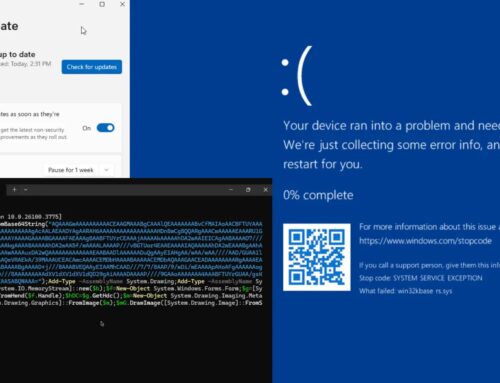
Researchers Detailed North Korean Threat Actors Technical Strategies to Uncover Illicit Access
In the intricate landscape of global cybersecurity, the evolving tactics of state-sponsored threat actors represent a persistent and significant challenge. North Korean cybercriminals, in particular, have demonstrated a remarkable aptitude for adapting their methodologies, transitioning from overt attacks to sophisticated, long-term digital deception campaigns. Recent research has shed critical light on these advanced strategies, revealing how these operatives have successfully infiltrated organizations worldwide, siphoning at least $88 million USD by masquerading as legitimate IT professionals.
This deep dive explores the technical strategies employed by North Korean threat actors, their exploitation of the remote work paradigm, and the critical measures organizations must adopt to defend against these insidious incursions. Understanding their operational playbook is the first step toward building a more resilient cybersecurity posture.
The Evolution of North Korean Cyber Operations
North Korea’s cyber offensive has shifted dramatically from direct financial theft or data exfiltration to an elaborate campaign of infiltration and sustained access. Researchers highlight a deliberate move towards a “digital deception” model. This involves threat actors integrating themselves into targets’ ecosystems rather than merely attacking them from the outside. The primary objective appears to be establishing persistent footholds for long-term financial gain, primarily through cryptocurrency theft or intellectual property espionage that can be monetized.
This strategic shift underscores a growing sophistication, moving beyond common ransomware or phishing schemes into a more nuanced and patient approach that exploits human vulnerabilities alongside technical ones.
Exploiting the Remote Work Paradigm: A Strategic Advantage
The global surge in remote work, catalyzed by recent events, has inadvertently become a significant enabler for North Korean threat actors. These operatives have expertly exploited the distributed nature of modern workforces to blend in, often posing as:
- Freelance Developers: Offering services on popular freelancing platforms.
- IT Staff: Responding to job postings for remote IT support or system administration roles.
- Contractors: Engaging in short-term projects that grant them access to corporate networks.
By embedding themselves within trusted corporate workflows, these actors establish legitimate-appearing identities. This allows them to bypass traditional perimeter defenses and gain internal access to sensitive systems, data, and communication channels. The inherent trust placed in new hires or contractors, coupled with often less stringent remote onboarding processes, creates fertile ground for their illicit activities.
Technical Strategies for Illicit Access
The success of these campaigns hinges on a blend of social engineering and technical exploitation. While the source primarily highlights the masquerade, underlying technical strategies facilitate illicit access once an operative gains a foothold:
- Supply Chain Compromise (Indirect): Though not a direct supply chain attack in the traditional sense, masquerading as a legitimate contractor can introduce malicious code or backdoors into an organization’s software or IT infrastructure as part of their “work product.”
- Lateral Movement: Once inside, actors leverage compromised credentials or unpatched vulnerabilities to move across networks, escalate privileges, and identify valuable assets. This often involves exploiting common misconfigurations or weak access controls.
- Persistence Mechanisms: Establishing backdoors, creating new privileged accounts, or modifying legitimate services to ensure continued access even if their initial access vector is discovered.
- Social Engineering & Phishing (Internal): Even after gaining access, these actors may deploy internal phishing campaigns or social engineering tactics to glean more credentials from unsuspecting employees or gather sensitive information.
It is crucial to note that specific CVEs for vulnerabilities exploited in this broad campaign are not detailed in the provided source. However, given the focus on remote work infiltration, common vulnerabilities in remote access solutions, collaboration tools, or operating systems that enable privilege escalation or arbitrary code execution (e.g., in unpatched VPN software or VDI solutions) could be leveraged upon establishing initial access. Organizations should regularly patch and monitor for known vulnerabilities, for instance, those that might affect common remote work software or operating systems, though no specific CVEs are attributed directly to the initial infiltration stated in the source.
Remediation Actions and Defensive Strategies
Defending against such sophisticated digital deception requires a multi-layered approach that combines stringent security practices with enhanced vigilance in hiring and third-party engagement.
- Enhanced Vetting and Background Checks: Implement rigorous background checks, reference validations, and identity verification processes for all new hires, especially remote employees and contractors, regardless of their role. Verify credentials and project portfolios independently.
- Least Privilege and Zero Trust: Adopt a principle of least privilege, granting only the minimum necessary access for a role. Implement Zero Trust Network Access (ZTNA) models, requiring continuous verification for every user and device, regardless of location.
- Robust Identity and Access Management (IAM): Utilize Multi-Factor Authentication (MFA) for all accounts, particularly for privileged access. Implement strong password policies and regularly review user permissions and access logs. De-provision access immediately upon contract termination or employee departure.
- Network Segmentation: Segment networks to limit lateral movement. Even if an attacker gains initial access, network segmentation can contain the breach and prevent them from reaching critical assets.
- Security Awareness Training: Continuously train employees on social engineering tactics, phishing awareness, and the importance of reporting suspicious activity. Educate HR and hiring managers on the specific threat of disguised foreign state actors.
- Proactive Threat Hunting and Monitoring: Implement advanced Endpoint Detection and Response (EDR) and Security Information and Event Management (SIEM) solutions to monitor for anomalous behavior, unusual access patterns, and suspicious network traffic. Actively hunt for indicators of compromise (IoCs).
- Software and System Patching: Maintain a rigorous patching schedule for all operating systems, applications, and network devices. Prioritize critical security updates to mitigate exploitable vulnerabilities.
- Third-Party Risk Management: Develop comprehensive third-party risk assessment programs for all contractors and vendors. Ensure they adhere to your security policies and standards.
Conclusion
The evolution of North Korean threat actor strategies into sophisticated digital deception campaigns underscores a critical shift in the cyber threat landscape. Their ability to monetize illicit access by masquerading as legitimate professionals highlights the necessity for organizations to fortify their defenses beyond traditional perimeter security. By implementing stringent vetting processes, embracing Zero Trust principles, and fostering a culture of continuous security awareness, organizations can significantly diminish their susceptibility to these pervasive and costly infiltrations. Proactive defense and an understanding of the adversary’s long game are paramount in protecting digital assets in the face of such adaptive threats.





